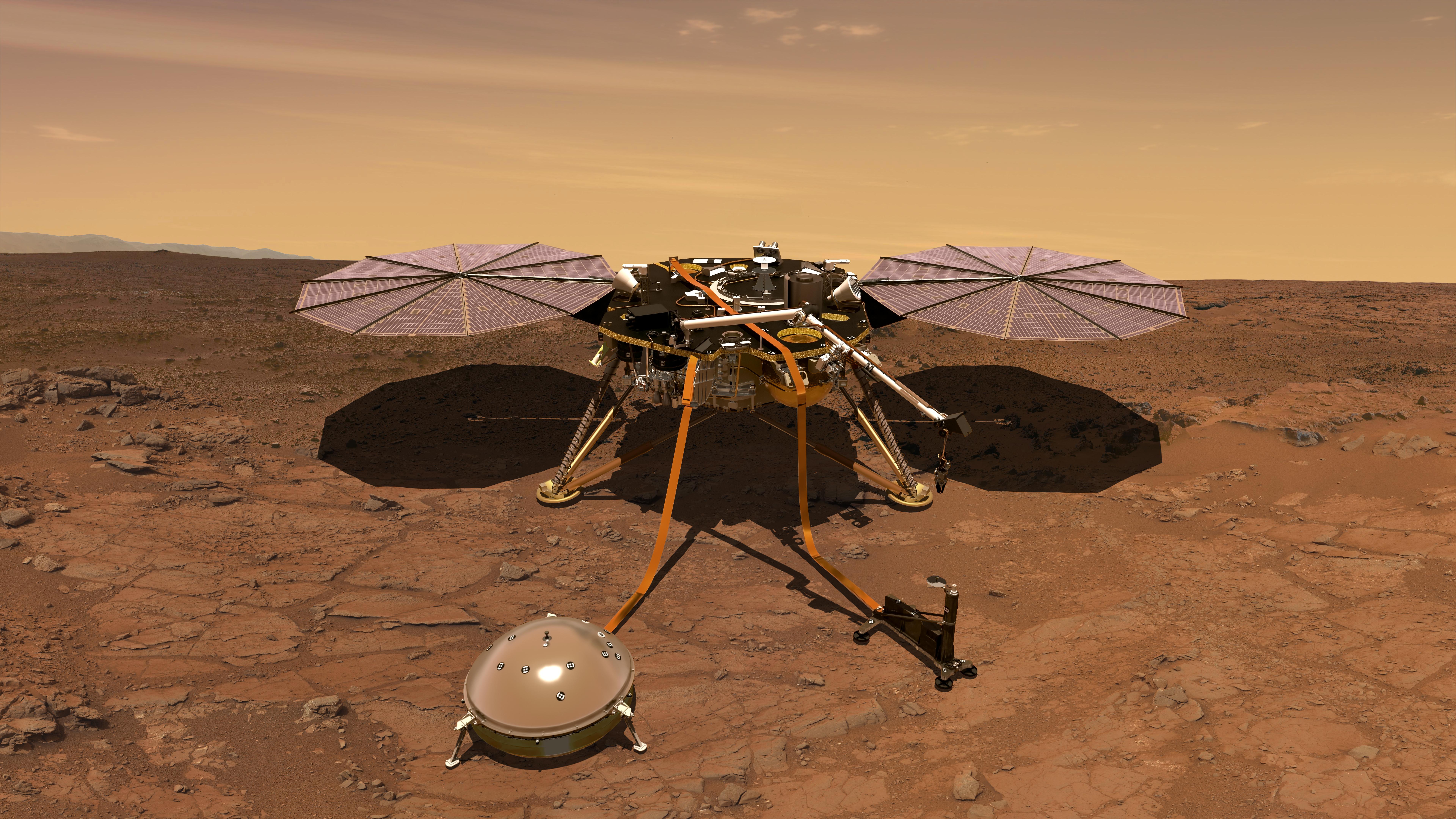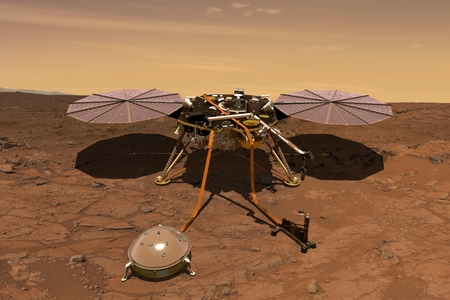 NASA’s InSight Mars Lander | Credit: NASA
NASA’s InSight Mars Lander | Credit: NASA
In May 2022, EPSS Professor Caroline Beghein and the Mars InSight mission used seismic observations on Mars to detect surface waves attributed to a massive, 4.7 magnitude marsquake. This exceedingly rare occurrence sent seismic waves completely around the planet’s circumference, and recording these waves is a massive step forward in our understanding of the red planet.
Mapping the seismic activity, the location, and frequency of impacts on Mars is of the utmost importance for future missions to the planet, helping reveal Mars’ interior structure and informing scientists and engineers about “where and how to build structures to ensure the safety of future human explorers” (UCLA Newsroom).
Read more about the marsquake and its implications at UCLA Newsroom!
The data from this “monster” marsquake can be combined with InSight’s data from a massive meteor impact in December of 2021 to investigate Mars’ crustal structure. Like the marsquake, this meteor impact was strong enough to produce surface waves, allowing the EPSS team and other scientists to peer at Mars’ surface and its history for the first time.
Read more on Eos.
InSight seismic data from five marsquakes, in conjunction with predictions of expected mantle structure, also helped Beghein and the InSight team detect a mid-mantle discontinuity (attributed to the post-olivine phase transition) within the Martian planet. These observations were used to infer that the Martian mantle is more iron rich than Earth, and that both planets have a similar potential temperature.
Read more through the team’s study published in PNAS.
